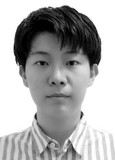Analysis of strength indicators of the muscles of the lower extremities: an instrumental method
Keywords:
method, strength abilities, female athletes, extensor muscles, regression equations, tests.Abstract
Objective of the study was to modify an instrumental approach for assessing the power of the leg extensor muscles and assess its efficacy in different athletic disciplines.
Methods and structure of the study. To evaluate the power and speed-power capabilities of the leg extensor muscles in athletes, a method called computer tensodynamography was employed. This method involves recording and analyzing the force-time curve. Based on the obtained tensodynamometric curves, the maximum isometric muscle strength (Fmax) demonstrated during the specific movement, and the time (tmax) it took to reach the maximum effort were determined.
The following calculations were performed: the differential index (gradient) of force (I), which represents the rate of force increase to its maximum (I = Fmax/tmax), the force achieved in 0,1 seconds, and the strength indicators relative to the athletes' body weight.
The participants in the experiment were athletes aged 15 to 17 (n=36), who were involved in short- and medium-distance running and ice hockey.
Для оценки силовых и скоростно-силовых возможностей мышц-разгибателей ноги у спортсменок был использован метод компьютерной тензодинамографии, заключающийся в регистрации и анализе кривой «сила-время». По полученным тензодинамометрическим кривым определялась максимальная изометрическая сила мышц (Fmax), проявляемая в описанном движении, время (tmax), в течение которого достигнут максимум усилия. Вычислялись: дифференциальный показатель (градиент) силы (I), характеризующий скорость ее нарастания до максимума (I = Fmax/tmax), сила, достигнутая за 0,1 с, а также силовые показатели относительно массы тела спортсменок. В эксперименте принимали участия спортсменки 15-17 лет (n=36), специализирующиеся в беге на короткие и средние дистанции, а также в хоккее на льду.
Results and conclusions. An innovative approach to evaluating the strength capabilities of the leg extensor muscles has been developed and validated. Its application in sports training has proven to be effective.
The dynamometric measurements of the leg extensor muscles, obtained using the new method in an isometric mode, have been validated as reliable indicators. They are recommended as tests for assessing the level of athletes' special strength training across various disciplines.
To predict athletic performance and set appropriate benchmarks for control exercises that contribute to achieving the desired athletic result, multiple regression equations have been created. These equations can be used in practice to tailor the training process for individual athletes.
References
Verkhoshanskiy Yu.V. Metodika otsenki skorostno-silovykh sposobnostey sportsmenov. Teoriya i praktika fizicheskoy kultury. 1979. No. 2. pp. 7-11.
Verkhoshanskiy Yu.V., Tikhonov V.V., Koloskov V.I. Programmirovaniye trenirovochnykh nagruzok po silovoy podgotovke khokkeistov v godichnom tsikle podgotovki. Guidelines. Moscow: Goskomitet SSSR po fizicheskoy kulture i sportu publ., 1990. 62 p.
Godik M.A. Sportivnaya metrologiya. Textbook for universities. Moscow: Fizkultura i sport publ., 1988. 191 p.
Zankovets V.E. Entsiklopediya testirovaniya [Encyclopedia of testing]. Moscow: Sport publ., 2016. 456 p.
Kazakov A.A. et al. Mesto sily v sisteme fizicheskikh kachestv khokkeista i rol silovoy podgotovki v khokkeye s shayboy. Uchenyye zapiski universiteta im. P.F. Lesgafta. 2018. No. 2. pp. 75-83.
Seluyanov V.N., Verkhoshanskiy Yu.V., Sarsaniya S.K. Metod otsenki bystroty proizvolnogo napryazheniya myshts-razgibateley nogi. Teoriya i praktika fizicheskoy kultury. 1985. No. 9. pp. 17-19.
Tarasov A.V. Potochnyy metod trenirovki v khokkeye. Moscow: Fizkultura i sport publ., 1966. 69 p.
Yuantsyuan Pan, Kozhedub M.S., Vrublevskiy E.P. Dinamika sostoyaniya sportsmenok v zavisimosti ot organizatsii trenirovochnykh vozdeystviy skorostno-silovoy napravlennosti. Teoriya i praktika fizicheskoy kultury. 2024. No. 7. pp. 20-22.

Additional Files
Published
How to Cite
Issue
Section
License
Copyright (c) 2025 Theory and Practice of Physical Culture

This work is licensed under a Creative Commons Attribution 4.0 International License.
